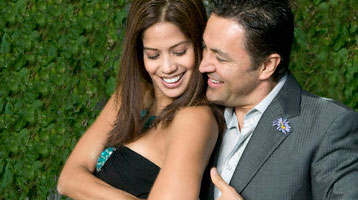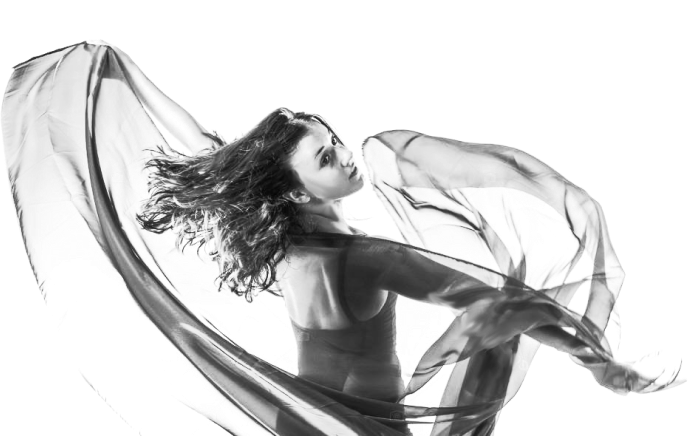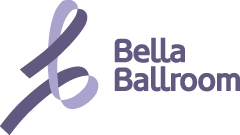
Swing Dance
East Coast Swing
The East Coast Swing is a classic dance that is entertaining, fun, and versatile. It is one of the most popular of all of the swing dances and tends to be the easiest one to learn. There are many variations of the East Coast Swing and this dance is sometimes called by other names including: Jive, Jitterbug, Lindy Hop, Shag, and Charleston. Although traditionally performed to big band style songs, many are swing dancing to current pop and country tunes.
History of East Coast Swing:
The East Coast Swing developed from the Lindy Hop during the 1940s. It was first called the Eastern Swing and then later referred to as the Jitterbug, East Coast Lindy and the Triple Swing. It was given it’s name, the East Coast Swing, in order to differentiate it from a version that was being danced in competitive ballroom dancing (called the Jive) and a new style being developed on the West Coast. The East Coast Swing has a six-count basic step that can be danced in either “single time” or “triple time.”
East Coast Swing is American and it’s origin lies in the dance halls of the swing music era that started in the early 1930s. The American Society of Dance originally rejected the dance that is now a keepsake in the mainstream social dance world. Dance instructors said it was a fad and tried to ignore the dance hoping it would die out. It took dance pioneer Arthur Murray to see the value in the dance for East Coast Swing to take it to its next development. Murray had his own line of dance studios and sent his dance instructors out to the nightclubs to learn the steps of the rejected dance to start learning them. Soon Murray discovered that the steps dancers were doing varied from town to town, and so decided to standardize the East Coast Swing dancing and did so with Hollywood choreographer and swing dance competitor Dean Collins. By 1951, the basic East Coast Swing repertoire was codified into a syllabus by another Murray instructor and competitor, Lauré Haile. Haile altered the version of the dance from an eight-step version to a modified version of the Foxtrot with a basic six-step pattern.
It is believed that a dancer named Frankie “Musclehead” Manning created the first aerials. This caused a soar in Swing dancing. Swing dancing became a performance art involving ensemble dancing, choreographed routines and aerobatic moves.
East Coast Swing dance was featured in many movies and this also contributed to the dance’s soar in popularity. It was in 1937’s Way Out West and many John Wayne movies such as A Lady Takes a Chance and The Fighting Seabees.
East Coast Swing Dance Today:
East Coast Swing Dance has had a resurgence since it’s birth causing Swing to be featured in competitions, dance clubs and studios around the world.
In the modern era of standardized American Style Ballroom Dance, there are essentially two basic swing dance styles. There is West Coast Swing and East Coast Swing. West Coast Swing is danced by partners in a slot typically to slower and sultry music around 90 to 130 beats per minute. It is characterized by a distinctive elastic look that comes from its basic extension and compression technique of partner connection. It favors improvisation. East Coast Swing has incorporated the rest of the swing type dance rhythms including Jitterbug, Lindy, and Shag. East Coast Swing is danced in single, double, and triple time Swing rhythms. The East Coast Swing can be danced to about any speed of music. The International Style dance “Jive” is a variation of the triple time East Coast Swing and is danced in 136 to 144 beats per minute.
The basic East Coast Swing is done in triple step, touch step, or single step patterns. This will vary depending on the tempo of the music and the skill of the dancers. The triple step is counted “1-2-3, 1-2-3, rock-step” and is used for slower music or for dancers with fast feet. The Touch Step is also known as Double Lindy. It is considered an interim dance step on the way to the triple step. It is counted as “1-touch two-touch, rock-step.” The single step swing is also known as Single Lindy. This pattern is most common for people just learning East Coast Swing dancing or for very fast music. It is counted as “1, 2, rock-step.”
East Coast Swing has appeared in films such as Swing Kids and on TV reality competition shows such So You Think You Can Dance and Dancing With the Stars. It continues to be a fun dance style choice, and while one needs to know the basics and a few patterns to get by dancing it, the most important elements of Swing success are having a love for the dance, enjoying the music and being open to fun!
East Coast Swing Music:
- “Some Kind of Wonderful” Grand Funk Railroad
- “The Wanderer” Dion
- “I Like It, I Love It” Tim McGraw
- “Saturday Night’s Alright For Fighting” Elton John
- “Man! I Feel Like a Woman” Shania Twain
- “You May Be Right” Billy Joel
- “The Way You Do the Things You Do” The Temptations
- “Right Back Where We Started From” Maxine Nightingale
- “It’s the Same Old Song” Four Tops
- “Bad, Bad Leroy Brown” Jim Croce
- “Every Heartbeat” Amy Grant
- “Love Train” Big & Rich
- “Thing Called Love” Bonnie Raitt
- “Calendar Girl” Neil Sedaka
- “You Keep Me Hangin On” Diana Ross and the Supremes
- “Rescue Me” Fontella Bass
- “Cherish” Madonna
- “Stuck With You” Huey Lewis & The News
- “Life During Wartime” Talking Heads
- “Good Time” Alan Jackson
- “The Wanderer” Eddie Rabbit
- “Why Don’t We Just Dance” Josh Turner
- “Little Deuce Coupe” Beach Boys
- “Build Me Up Buttercup” The Foundations
- “Hey Ya” Outkast
- “Swing That Thing” Zoot Monster Band
- “Save My Soul” Big Bad Voodoo Daddy
- “The Contender” Royal Crown Revue
- “Sh-Boom” The Trevor Horn Orchestra
- “The Sweet Escape” Gwen Stefani
- “Waterloo” Abba
- “Day tripper” The Beatles
- “Sister Golden Hair” America
- “How Sweet It Is” Michael Buble
- “Baby I’m a Star” Prince and the Revolution
- “Twist and Shout” Beatles
- “That Thing You Do” The Wonders
- “String of Pearls” Glen Miller Orchestra
- “S.O.S” Rihanna
- “Club Savoy” Rockin Louie and Mamma Jammers
- “Man Eater” Nelly Furtado
East Coast Swing Music (Single Time):
- “Jump, Jive and Wail” Brian Setzer Orchestra
- “Big Time Operator” Big Bad Voodoo Daddy
- “Runaround Sue” Dion
- “Money” Indigo Swing
- “Go, Daddy, Go” Cherry Poppin’ Daddies
- “Girls Gone Wild” Travis Tritt
- “Crazy Little Thing Called Love” Michael Buble


